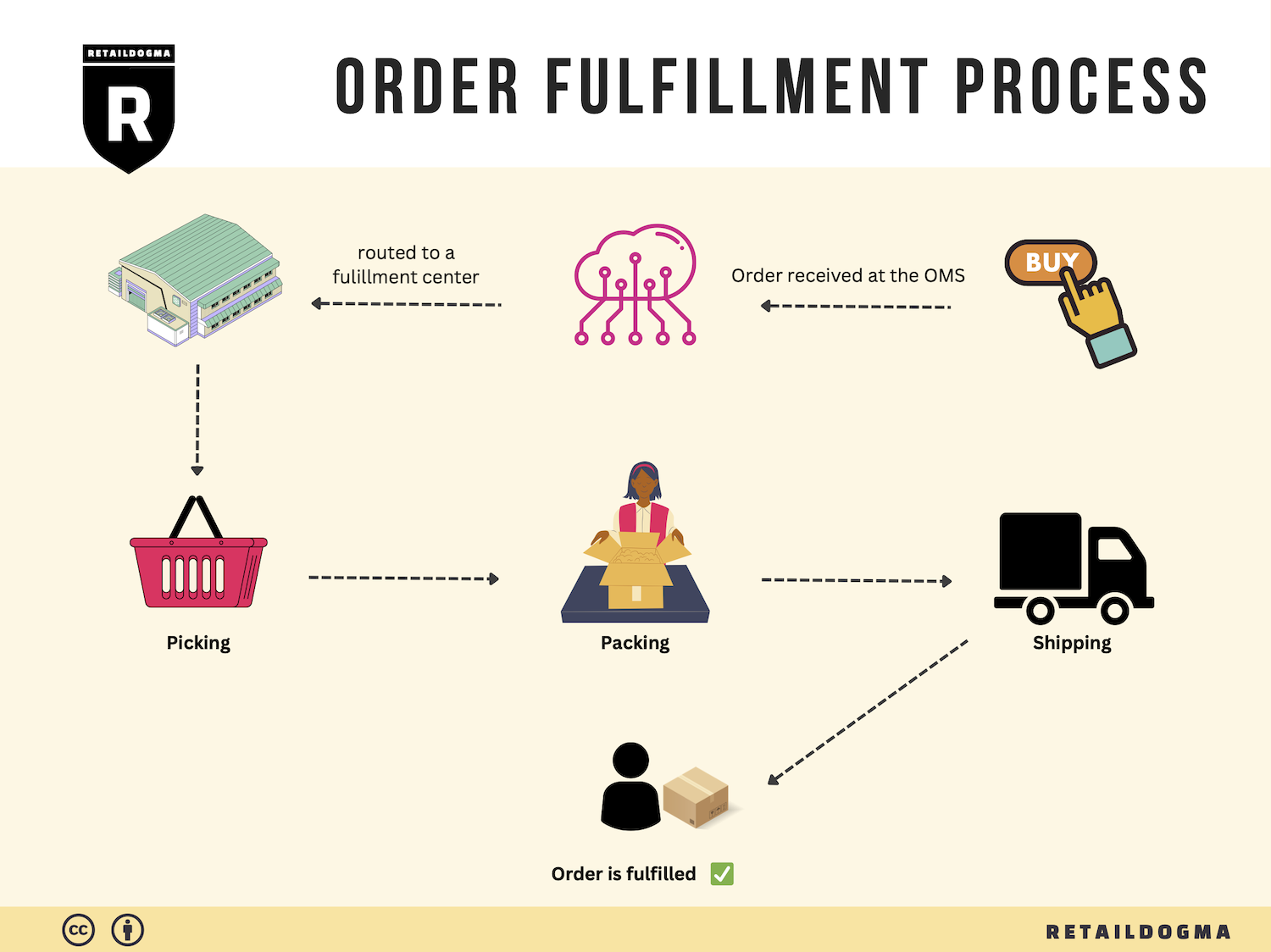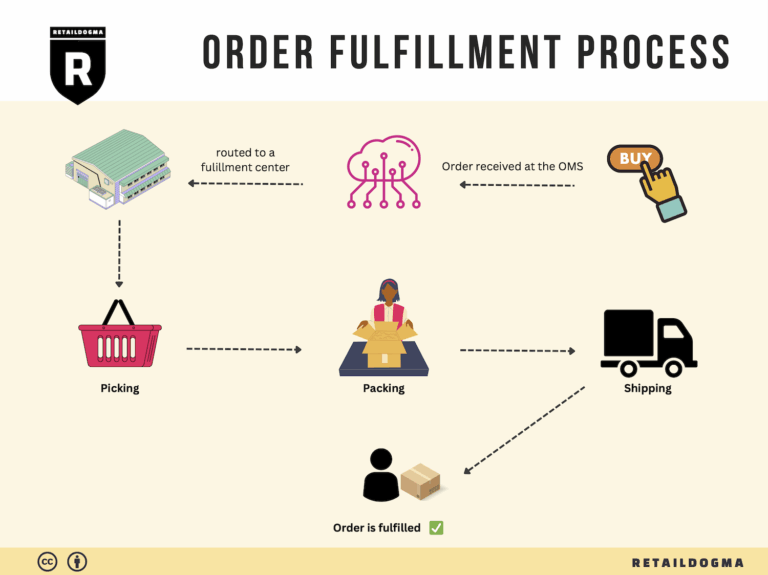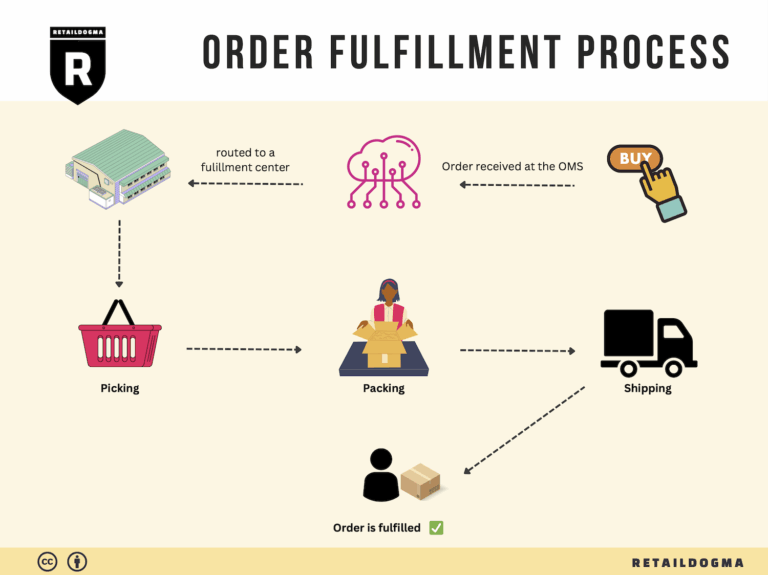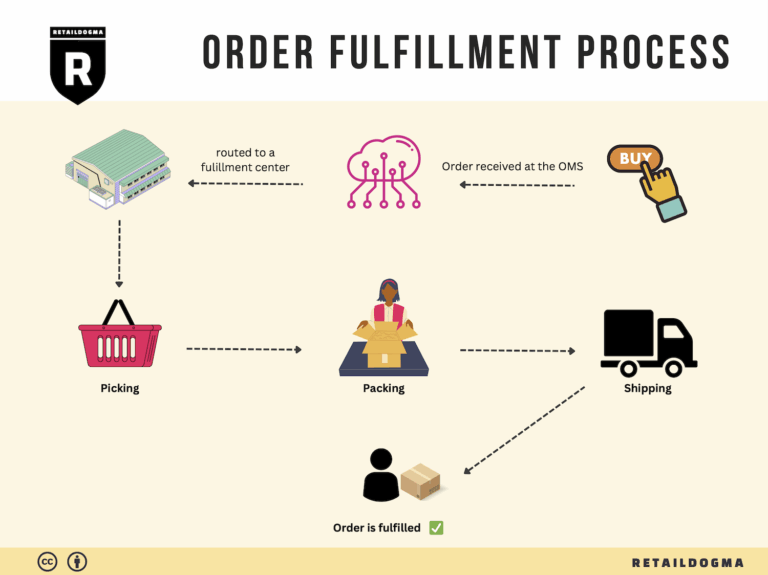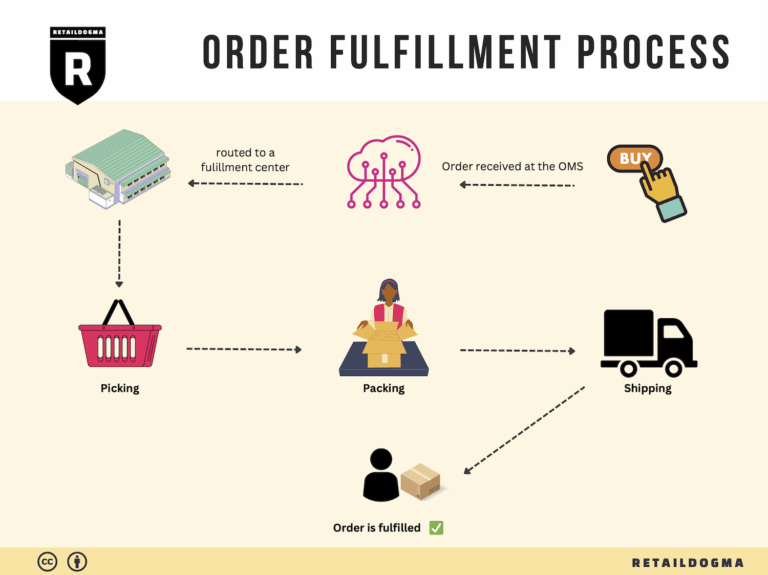Ecommerce Fulfillment Services: The Ultimate Guide (2025)
What is E-commerce Fulfillment? An Introduction for Growing Businesses
Understanding the Challenges of E-commerce Fulfillment
As an e-commerce business owner, one of the most common pain points you may face is the overwhelming task of packing and shipping orders. The excitement of growing your sales can quickly turn into stress when you find yourself buried under boxes, packing materials, and shipping labels. Fulfillment is the backbone of your e-commerce operation; it encompasses everything from receiving inventory to delivering products to your customers’ doorsteps. Understanding this process is crucial for maintaining efficiency and ensuring customer satisfaction.
What is E-commerce Fulfillment?
E-commerce fulfillment refers to the comprehensive process of storing, packing, and shipping products to customers who purchase them online. This includes inventory management, order processing, shipping logistics, and returns handling. For growing businesses, mastering fulfillment can be a game-changer, allowing you to focus on other critical aspects of your operations, such as marketing and product development.
What This Guide Covers
In this guide, we will explore various fulfillment models available to e-commerce businesses, including:
- Third-Party Logistics (3PL): Partnering with external providers who handle warehousing and shipping.
- Fulfillment by Amazon (FBA): Leveraging Amazon’s vast logistics network to fulfill orders for your products.
We will also delve into core fulfillment services, such as inventory management, order processing, and shipping options. Understanding these services will help you identify which solutions best suit your business needs.
Choosing the right fulfillment partner is crucial for your success. We will provide insights on key factors to consider when selecting a partner, including their technology capabilities, scalability, and customer service. Additionally, we’ll discuss pricing structures, helping you navigate the costs associated with various fulfillment options.
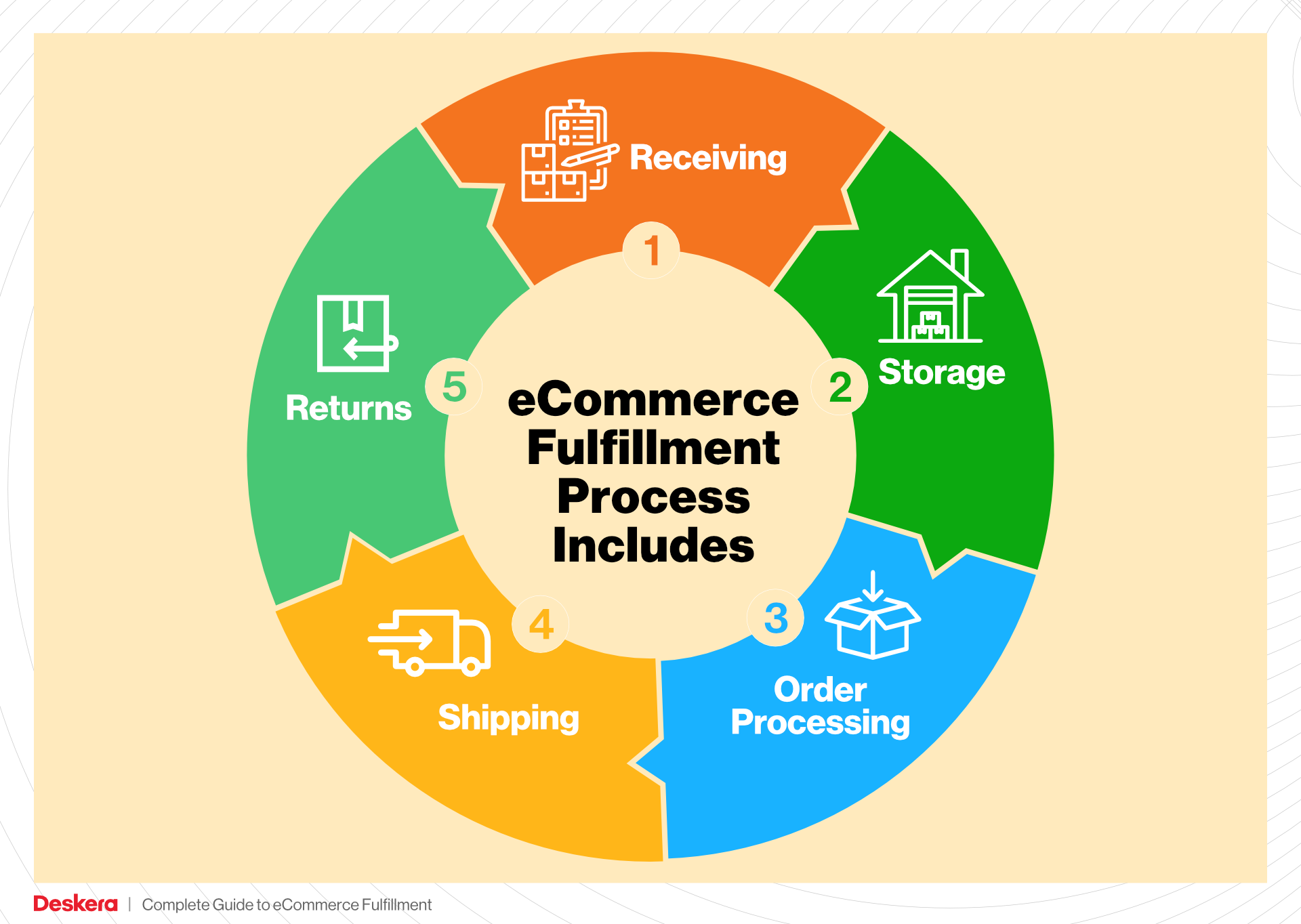
Empowering Your Business Decisions
Ultimately, this guide aims to empower you with the knowledge necessary to make informed decisions about your logistics strategy. By understanding the intricacies of e-commerce fulfillment, you can streamline your operations, enhance customer satisfaction, and support your business growth. Whether you’re just starting or looking to optimize your existing fulfillment processes, this comprehensive guide will serve as a valuable resource on your journey to e-commerce success.
What You’ll Learn In This Guide
- What is E-commerce Fulfillment? An Introduction for Growing Businesses
- The Order Fulfillment Process: From ‘Buy’ Button to Customer’s Door
- Comparing Fulfillment Models: In-House vs. 3PL vs. Dropshipping
- A Deep Dive into Amazon FBA: Pros, Cons, and Who It’s For
- Core Services Offered by Fulfillment Centers
- How to Choose a Fulfillment Partner: A 6-Point Checklist
- Understanding Fulfillment Pricing: A Breakdown of Common Fees
- Frequently Asked Questions (FAQs) about Fulfillment
- Conclusion: Is Outsourcing Fulfillment the Right Move for Your Business?
- Important Disclaimer
The Order Fulfillment Process: From ‘Buy’ Button to Customer’s Door
1. Receiving Inventory
The first step in the order fulfillment process is receiving inventory. This involves the acceptance and verification of products delivered to the e-fulfillment center. Upon arrival, shipments are checked against purchase orders to ensure that the correct items and quantities have been received. This step is crucial because discrepancies at this stage can lead to stockouts or overstock situations, which can hinder sales and increase costs.
Key terms associated with this step include SKU (Stock Keeping Unit), a unique identifier for each product. Properly assigning SKUs during the receiving process ensures that inventory can be tracked efficiently throughout the supply chain. Effective receiving processes can also help in reducing lead times and improving overall inventory accuracy, which is vital for maintaining customer satisfaction.
2. Warehouse Storage
Once inventory is received and verified, the next step is warehouse storage. This process involves systematically placing products into designated storage locations within the fulfillment center. Proper storage techniques are essential to maximize space utilization and facilitate easy retrieval of items when orders are placed.
This step is important because well-organized storage can significantly enhance operational efficiency. Using a warehouse management system (WMS), businesses can optimize inventory placement based on demand patterns, ensuring that high-velocity items are easily accessible. Efficient warehouse storage reduces the time spent searching for products during order picking, ultimately speeding up the fulfillment process.
3. Order Picking
Order picking is the process of selecting the right items from storage to fulfill customer orders. When a customer places an order online, the system generates a pick list, which details the items to be retrieved along with their storage locations. This process can be executed manually or through automated systems, depending on the scale of operations.
The significance of order picking lies in its direct impact on order accuracy and customer satisfaction. Errors in this step can lead to incorrect shipments, resulting in returns and negative customer experiences. Implementing techniques such as batch picking (where multiple orders are picked simultaneously) or zone picking (where pickers are assigned specific areas of the warehouse) can enhance efficiency and accuracy in this phase. The goal is to minimize picking time while maximizing order accuracy.

4. Order Packing
After items have been picked, the next step is order packing. This process involves securely packaging the selected items for shipment to ensure they arrive at the customer’s door in perfect condition. During this stage, packers may use a variety of materials, such as boxes, bubble wrap, and packing peanuts, to protect products during transit.
The importance of order packing cannot be overstated, as it directly affects the customer’s perception of your brand. Well-packed orders enhance customer satisfaction and reduce the likelihood of damage during shipping. Key terms related to this step include packing slips, which are documents included with shipments that outline the contents of the package. Utilizing standardized packing processes can streamline operations and reduce costs associated with returns due to damage.
5. Shipping & Delivery
The final step in the order fulfillment process is shipping and delivery. Once orders are packed, they are labeled and handed over to shipping carriers for delivery to customers. This step includes selecting the appropriate shipping methods based on factors such as cost, speed, and destination.
Efficient shipping and delivery are critical for maintaining customer satisfaction and loyalty. Companies often utilize shipping software to automate label generation and track shipments in real-time, providing customers with updated information on their order status. Additionally, establishing relationships with reliable carriers can improve delivery times and reduce shipping costs. Ultimately, effective management of this step ensures that products reach customers promptly, reinforcing a positive shopping experience.
In conclusion, understanding and optimizing each step of the order fulfillment process is essential for e-commerce business owners and operations managers. By focusing on the details of receiving inventory, warehouse storage, order picking, packing, and shipping, businesses can enhance operational efficiency, reduce costs, and improve customer satisfaction, paving the way for growth and scalability in the competitive e-commerce landscape.
Comparing Fulfillment Models: In-House vs. 3PL vs. Dropshipping
Fulfillment Model Comparison
| Model | Who Handles Inventory | Best For (Business Stage) | Key Advantage | Key Disadvantage |
|---|---|---|---|---|
| In-House Fulfillment | The business itself | Established businesses with volume | Full control over inventory and operations | Higher overhead costs and complexity |
| Third-Party Logistics (3PL) | External logistics providers | Growing businesses looking to scale | Cost-effective and scalable logistics | Less control over inventory and processes |
| Dropshipping | Suppliers or manufacturers | Startups and businesses with low risk | Minimal investment and overhead | Lower profit margins and potential quality issues |
In-House Fulfillment
In-house fulfillment involves a business managing its own inventory and logistics operations within its facilities. This model is best suited for established businesses that have reached a level of order volume that justifies the investment in infrastructure and personnel. One of the primary advantages of in-house fulfillment is the complete control it offers over inventory management, order processing, and shipping operations. This control allows businesses to ensure quality standards are met and that they can respond swiftly to customer needs or changes in demand.
However, the disadvantages are significant. Operating an in-house fulfillment center typically incurs higher overhead costs due to the need for warehousing, staffing, and technology. Additionally, businesses must deal with the complexities of logistics management, which can divert focus away from core business activities. As a company scales, maintaining efficiency in operations and managing labor can become increasingly challenging, leading to potential bottlenecks and customer dissatisfaction if not managed effectively.
Third-Party Logistics (3PL)
Third-party logistics (3PL) providers offer comprehensive logistics services, including warehousing, inventory management, and shipping. This model is particularly beneficial for growing businesses that are looking to scale operations without the burden of managing logistics internally. By outsourcing these functions, businesses can leverage the expertise and infrastructure of 3PL providers, which often have established networks and advanced technology systems for tracking and managing shipments.
The key advantage of utilizing a 3PL provider is the cost-effectiveness and scalability they offer. Businesses can adapt their logistics needs according to demand fluctuations without needing to invest heavily in infrastructure. However, a major drawback is the reduced control over inventory and fulfillment processes. Businesses must rely on their 3PL partners to maintain quality and efficiency, which can lead to challenges if the provider does not meet expectations. Moreover, the integration of 3PL systems with a business’s existing processes can require significant effort and investment in technology.
Dropshipping
Dropshipping is a fulfillment model where the retailer does not hold inventory but instead transfers customer orders directly to a supplier or manufacturer, who then ships the products directly to the customer. This model is particularly attractive for startups and entrepreneurs looking to enter the e-commerce space with minimal financial risk and investment. Since there are no upfront inventory costs, businesses can offer a wide range of products without the financial burden of stocking items.
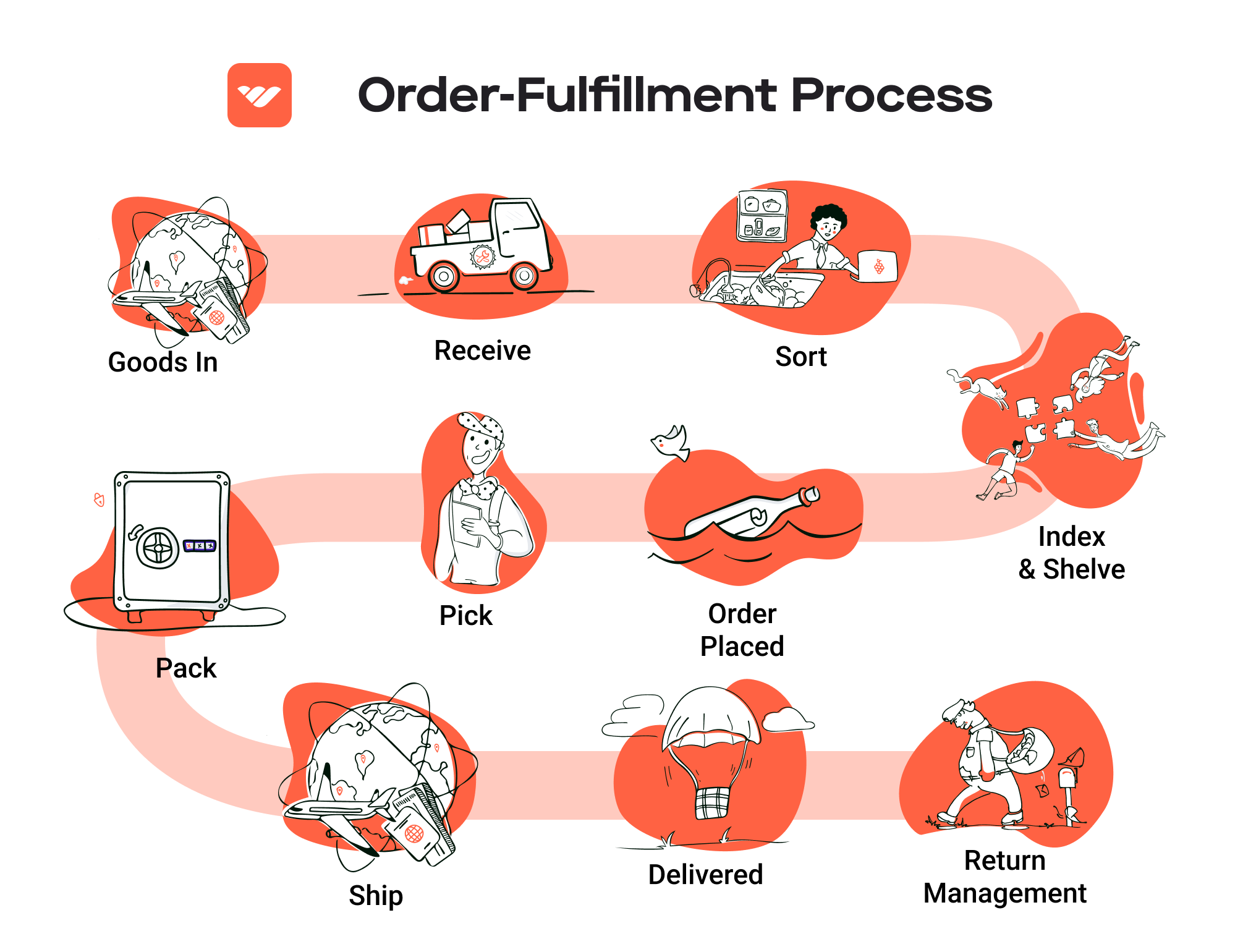
The primary advantage of dropshipping is the low overhead and minimal investment required to start. Entrepreneurs can focus on marketing and customer service rather than logistics and inventory management. However, dropshipping also comes with significant disadvantages, including lower profit margins due to reliance on third-party suppliers and potential issues with product quality and fulfillment speed. Retailers may face challenges in managing customer expectations, especially if suppliers are slow to ship or deliver subpar products. Additionally, businesses have limited control over the fulfillment process, which can impact brand reputation and customer satisfaction.
Conclusion
Choosing the right fulfillment model is a critical decision that can significantly impact an e-commerce business’s scalability and operational efficiency. In-house fulfillment offers control but comes with higher costs and complexity. Third-party logistics provide a scalable solution but can reduce control over inventory and processes. Finally, dropshipping enables low-risk entry into the market, although it can result in lower profits and quality control issues. Each model has its strengths and weaknesses, and the best choice depends on the specific needs, resources, and goals of the business. As such, business owners should carefully assess their current stage, growth ambitions, and operational capabilities before making a decision.
A Deep Dive into Amazon FBA: Pros, Cons, and Who It’s For
Understanding Fulfillment by Amazon (FBA)
Fulfillment by Amazon (FBA) is a service provided by Amazon that allows sellers to store their products in Amazon’s fulfillment centers. Amazon then takes care of storage, packaging, and shipping directly to the customers. This service is particularly advantageous for e-commerce business owners who want to leverage Amazon’s vast logistics network and customer base.
When a customer orders a product listed by an FBA seller, Amazon handles the entire fulfillment process, including customer service and returns. Sellers can focus on growing their business while Amazon manages the logistics. This model not only simplifies the shipping process but also enhances product visibility due to Amazon’s trusted platform.
How FBA Works
- Registration: Sellers must first create an Amazon seller account and enroll in the FBA program.
- Product Listing: After registration, sellers list their products on Amazon and choose to fulfill them through FBA. They can also set their pricing and manage inventory through the seller dashboard.
- Inventory Shipment: Sellers prepare their products and ship them to Amazon’s fulfillment centers. Amazon provides guidelines on how to package and label items correctly.
- Storage and Fulfillment: Once the inventory arrives at the fulfillment center, Amazon stores it until a customer places an order. Amazon handles all aspects of the fulfillment process, including picking, packing, and shipping.
- Customer Service and Returns: Amazon manages customer inquiries and returns, which can significantly reduce the workload for sellers.
Pros of Using FBA
1. Prime Eligibility
One of the most significant advantages of using FBA is that products become eligible for Amazon Prime. Prime members enjoy benefits like free two-day shipping, which can significantly increase sales and customer loyalty. The Prime badge often boosts product visibility and can lead to higher conversion rates.
2. Customer Trust
Amazon is a trusted platform for online shopping. By using FBA, sellers can leverage this trust, as customers are more likely to purchase products fulfilled by Amazon. The reliability of Amazon’s shipping and customer service can enhance a seller’s reputation.
3. Multi-Channel Fulfillment
FBA is not limited to Amazon sales. Sellers can use FBA to fulfill orders from other sales channels, such as their own website or eBay. This flexibility allows businesses to streamline their operations and manage inventory from a single source.
4. Scalability
FBA allows sellers to scale their businesses without needing to invest heavily in logistics infrastructure. As sales grow, sellers can send more inventory to Amazon’s fulfillment centers, allowing them to meet increased demand without the headaches of managing warehousing and shipping.
5. Time Savings
By outsourcing logistics to Amazon, sellers save considerable time that can be redirected towards product development, marketing, and other core business activities. This can be crucial for small businesses looking to grow efficiently.
Cons of Using FBA
1. High Fees
While FBA offers many benefits, it comes with various fees, including storage fees for keeping inventory in Amazon’s fulfillment centers and fulfillment fees for each order processed. These costs can add up, particularly for sellers with lower-priced items or those with slow-moving inventory.
2. Strict Inventory Rules
Amazon has stringent rules regarding inventory management. Sellers must ensure that their inventory levels are accurately reflected and that products are compliant with Amazon’s guidelines. Failure to comply can result in penalties or even account suspension.
3. Commingling Risks
FBA operates on a commingling inventory model, where products from different sellers are stored together. This can pose risks for sellers, particularly if their products are mixed with lower-quality items from other sellers, potentially harming their reputation and customer satisfaction.
4. Limited Control
Sellers give up a degree of control over their shipping processes and customer service. While Amazon manages these aspects, some sellers may prefer to handle these elements themselves to maintain brand identity and customer relationships.
5. Complex Returns Process
While Amazon handles returns, the process can sometimes be confusing for sellers. Returns can affect inventory counts and lead to additional fees if not managed properly.
Who is FBA Best For?
Fulfillment by Amazon is best suited for:
-
Small to Medium-Sized Businesses: Businesses looking to scale without investing heavily in logistics can benefit immensely from FBA. It allows them to focus on growth while Amazon manages fulfillment.
-
E-commerce Entrepreneurs: Those who want to take advantage of Amazon’s vast customer base and logistics capabilities will find FBA an attractive option, especially if they sell products that are likely to appeal to Prime members.
-
Sellers with High Turnover Products: FBA is ideal for sellers with fast-moving inventory, as the fees can be offset by the increased sales volume due to Prime eligibility and Amazon’s customer trust.
-
Businesses with Multi-Channel Sales: Companies that sell across various platforms and want a streamlined fulfillment process will benefit from FBA’s multi-channel capabilities.
In conclusion, while Fulfillment by Amazon offers a robust solution for many e-commerce businesses, it’s essential for sellers to carefully assess their specific needs, inventory types, and financial considerations before diving in. Understanding both the advantages and disadvantages will help businesses make informed decisions that align with their growth strategies.
Core Services Offered by Fulfillment Centers
Inventory Management & Warehousing
Inventory management and warehousing are foundational services provided by fulfillment centers that play a crucial role in the efficiency of e-commerce operations. This service involves the systematic tracking and storage of products within a fulfillment center, ensuring that stock levels are maintained according to demand forecasts and sales patterns.
What it is: Fulfillment centers use sophisticated inventory management systems to monitor stock levels in real-time. This includes receiving products, storing them in organized layouts, and tracking their movements within the facility. Advanced technologies, such as barcode scanning and RFID tagging, facilitate accurate inventory counts and minimize the risk of errors.
Benefits: For e-commerce businesses, effective inventory management translates into several key advantages:
-
Reduced Stockouts and Overstocks: By maintaining accurate records and forecasting demand, fulfillment centers help businesses avoid costly stockouts that can lead to missed sales opportunities, as well as overstocks that tie up capital.
-
Improved Cash Flow: Efficient inventory turnover allows businesses to free up cash that would otherwise be tied up in unsold stock, enabling reinvestment into other areas of the business.
-
Enhanced Customer Satisfaction: When products are readily available and orders can be fulfilled promptly, customer satisfaction improves, leading to repeat business and positive reviews.
-
Data-Driven Insights: Access to detailed inventory reports helps businesses make informed decisions about product offerings, seasonal trends, and purchasing strategies.
Pick and Pack Services
Pick and pack services are integral to the fulfillment process, directly influencing the speed and accuracy of order fulfillment.
What it is: This service involves the selection (picking) of items from the warehouse based on customer orders and their subsequent packaging (packing) for shipment. Fulfillment centers employ systematic processes and technologies to streamline this operation, often utilizing automated systems for efficiency.
Benefits: The advantages of effective pick and pack services for e-commerce businesses include:
-
Increased Efficiency: Automation and organized workflows reduce the time taken to fulfill orders, allowing businesses to process a higher volume of orders in a shorter timeframe.
-
Accuracy: With modern technology, such as pick-to-light systems and mobile scanning devices, the chances of picking errors are minimized, reducing returns and improving customer trust.
-
Scalability: As businesses grow, fulfillment centers can easily scale their pick and pack operations to handle increased order volumes without significant overhead costs.
-
Customization: Many fulfillment centers offer customizable packaging options, allowing businesses to enhance their brand presentation and improve the unboxing experience for customers.
Kitting and Assembly
Kitting and assembly are value-added services that can differentiate an e-commerce business in a competitive marketplace.
What it is: Kitting involves assembling various individual products into ready-to-sell kits or bundles, while assembly refers to putting together components to create a finished product. Fulfillment centers can manage these processes, ensuring that the final product meets customer specifications.
Benefits: Utilizing kitting and assembly services can provide several key benefits:
-
Enhanced Product Offerings: By creating kits or bundles, businesses can offer more appealing products, often at a perceived value, which can lead to higher sales.
-
Streamlined Operations: Outsourcing kitting and assembly to fulfillment centers allows businesses to focus on core competencies such as marketing and product development while leaving complex assembly tasks to experts.
-
Cost Savings: Fulfillment centers often have the equipment and expertise to perform kitting and assembly more efficiently than in-house operations, leading to reduced labor costs and increased productivity.
-
Faster Time to Market: With fulfillment centers handling kitting and assembly, businesses can bring new product offerings to market more quickly, responding to customer demand and trends without the delay of in-house production.
Returns Management (Reverse Logistics)
Returns management, or reverse logistics, is a critical service that addresses the challenges of product returns in e-commerce.
What it is: This service encompasses the process of handling returned products, including inspection, restocking, refurbishing, or disposal. Fulfillment centers streamline this process to ensure that returns are processed quickly and efficiently.
Benefits: An effective returns management system offers several benefits for e-commerce businesses:
-
Improved Customer Experience: A streamlined and hassle-free return process enhances customer satisfaction, as consumers are more likely to shop with businesses that offer easy return policies.
-
Cost Efficiency: By effectively managing returns, businesses can minimize losses associated with returned goods and reduce the costs of processing these returns.
-
Data Insights: Returns management provides valuable data on customer preferences and product issues, which can inform product development and marketing strategies.
-
Sustainability: Efficient returns management can also incorporate sustainable practices, such as recycling or refurbishing returned items, aligning with consumer preferences for environmentally responsible businesses.
In summary, fulfillment centers offer a suite of core services that can significantly enhance the operational efficiency of e-commerce businesses. By leveraging inventory management, pick and pack services, kitting and assembly, and returns management, businesses can improve customer satisfaction, reduce costs, and ultimately scale their operations effectively.
How to Choose a Fulfillment Partner: A 6-Point Checklist
Location & Warehouse Network
When selecting a fulfillment partner, the geographic location of their warehouses is crucial. The closer a fulfillment center is to your customer base, the faster and more cost-effective the shipping will be. This can significantly enhance customer satisfaction and reduce shipping costs.
Key Questions to Ask:
– Where are your fulfillment centers located?
– How does your location strategy align with our target market?
– What is your average shipping time to key regions?
Technology & Integrations
In the digital age, technology plays a pivotal role in the efficiency of fulfillment operations. A good fulfillment partner should have robust technology that allows for real-time inventory tracking, order processing, and data analytics. Additionally, they should be able to integrate seamlessly with your existing e-commerce platforms and management systems.
Key Questions to Ask:
– What technology do you use for inventory management and order processing?
– Can you integrate with our existing e-commerce platform (e.g., Shopify, WooCommerce)?
– How do you ensure data accuracy and security in your systems?
Specializations (e.g., Cold Storage, Oversized Items)
Depending on your product offerings, it may be essential to partner with a fulfillment center that specializes in certain types of products. For example, if you sell perishable goods, you’ll need a partner with cold storage capabilities. Similarly, if your products are oversized or require special handling, ensure that the partner has the necessary facilities and expertise.
Key Questions to Ask:
– What types of products do you specialize in handling?
– Do you have specialized facilities for items that require unique storage conditions?
– Can you provide case studies or examples of how you’ve managed similar products?
Scalability & Capacity
As your business grows, your fulfillment partner should be able to scale operations to meet increasing demand. This includes having the capacity to handle seasonal spikes in orders or the ability to expand their services as your product range grows.
Key Questions to Ask:
– What is your current capacity for order fulfillment?
– How quickly can you scale operations to meet increased demand?
– Have you managed seasonal fluctuations in demand before? If so, how did you handle it?
Pricing and Contracts
Understanding the cost structure of your fulfillment partner is essential for maintaining profitability. Look for transparency in pricing and ensure that you’re aware of any additional fees that may arise, such as for storage, picking, or shipping. Also, review the contract terms carefully to avoid any surprises.
Key Questions to Ask:
– Can you provide a detailed breakdown of your pricing model?
– Are there any additional fees we should be aware of?
– What are the terms of the contract? Is there flexibility for renegotiation as our needs change?
Customer Support & Reviews
The level of customer support provided by a fulfillment partner can significantly impact your operations. You want to ensure that you have access to knowledgeable support staff who can quickly resolve issues as they arise. Additionally, looking at reviews and testimonials from other clients can provide insights into the partner’s reliability and service quality.
Key Questions to Ask:
– What type of customer support do you offer? Is it 24/7?
– Can you provide references from current or past clients?
– How do you handle issues or complaints from clients?
Conclusion
Choosing the right fulfillment partner is a critical decision that can impact your e-commerce operations significantly. By using this checklist, you can ensure that you evaluate potential partners thoroughly, considering all aspects that are vital to your business’s success. Take the time to conduct in-depth discussions and research to select a partner that aligns with your operational goals and customer service standards.
Understanding Fulfillment Pricing: A Breakdown of Common Fees
Initial Setup Fees
Initial setup fees are the costs incurred when you first engage a fulfillment center. These fees may cover the onboarding process, which includes integrating your e-commerce platform with the fulfillment center’s systems, setting up your inventory, and training staff to handle your products.
Typically, these fees can vary widely depending on the complexity of your setup and the fulfillment center’s technology. For example, if you need custom software integration or specialized training for handling unique products, the costs can escalate. It’s crucial to clarify what the setup fee encompasses—some centers may include initial inventory counts or even packaging materials, while others may charge separately for these services.
Receiving Fees
Receiving fees are charges associated with the intake of inventory into the fulfillment center. When your products arrive, the center must check them in, which involves unpacking, counting, and inspecting them for quality.
These fees are usually calculated per shipment or based on the volume of items received. For instance, a fulfillment center might charge a flat fee for every shipment, plus an additional fee for each item received. Understanding this cost is essential, especially if you plan to ship large quantities of products. To minimize these fees, you can consolidate shipments and ensure that all items are in good condition to avoid additional handling.
Storage Fees (per pallet/bin)
Storage fees are incurred for keeping your inventory in the fulfillment center. These fees can be charged on a per-pallet or per-bin basis, depending on how the fulfillment center organizes its space.
The cost structure for storage typically reflects both the size of your inventory and the duration it remains in the warehouse. For example, a center may charge a monthly fee for each pallet of goods stored. If your products are slow-moving, these fees can add up quickly. To manage storage costs effectively, regularly review your inventory turnover rates and consider implementing just-in-time inventory practices, ensuring that you only store what you need.
Pick & Pack Fees (per item/order)
Pick and pack fees are charged for the labor involved in selecting items from the warehouse and preparing them for shipment. This process includes picking the correct items from inventory, packing them securely, and labeling them for shipping.
These fees are generally calculated on a per-item or per-order basis. For instance, a fulfillment center may charge a fixed rate for picking items and an additional fee for packing them. If you have a high volume of small orders, these costs can accumulate quickly. To reduce pick and pack fees, consider optimizing your product assortment or using standardized packaging materials to streamline the packing process.
Shipping Fees
Shipping fees encompass the costs associated with sending your products to customers. These fees can vary based on several factors, including the shipping method (ground, air, etc.), package weight and dimensions, destination, and any additional services like tracking or insurance.
Typically, fulfillment centers negotiate shipping rates with carriers and pass these costs onto you, which can lead to variability in pricing. To get a handle on these costs, consider establishing a relationship with a fulfillment center that offers competitive shipping rates or is willing to pass on discounts from their carrier agreements. Additionally, offering customers multiple shipping options can balance costs and improve customer satisfaction.
Tips for Getting an Accurate Quote
-
Be Transparent About Your Needs: Clearly outline your expected order volume, product types, and any special handling requirements. The more information you provide, the more accurate your quote will be.
-
Request Detailed Breakdown: Ask for a detailed breakdown of all potential fees. This will help you understand how each fee contributes to the overall cost.
-
Compare Multiple Fulfillment Centers: Don’t settle for the first quote you receive. Comparing multiple options can help you gauge the market and identify competitive pricing.
-
Consider Long-Term Costs: Look beyond initial costs. Some centers may offer lower setup fees but higher ongoing costs. Evaluate the total cost of ownership.
-
Inquire About Discounts: Some fulfillment centers offer discounts based on volume or long-term contracts. Don’t hesitate to ask about these options.
By understanding these common fulfillment pricing models and following these tips, you can make informed decisions that will help your e-commerce business scale efficiently and effectively.
Frequently Asked Questions (FAQs) about Fulfillment
1. What is Kohl’s e-Fulfillment Center (eFC)?
Kohl’s e-Fulfillment Center (eFC) is a specialized facility designed to handle online order fulfillment for Kohl’s customers. It operates 24/7 and is responsible for picking, packing, and shipping products directly to customers’ homes, enhancing the efficiency of Kohl’s e-commerce operations.
2. How many e-Fulfillment Centers does Kohl’s have?
Kohl’s operates four e-Fulfillment Centers across the United States. These centers are strategically located to optimize shipping times and improve service levels for customers shopping online.
3. What distinguishes an e-Fulfillment Center from a traditional warehouse?
An e-Fulfillment Center is specifically designed for the fast-paced demands of e-commerce, focusing on order processing and shipping directly to consumers. In contrast, a traditional warehouse primarily stores goods for distribution to retail stores rather than for direct shipment to customers.
4. What is the role of technology in Kohl’s e-Fulfillment Centers?
Kohl’s utilizes advanced technology in its e-Fulfillment Centers to enhance operational efficiency. This includes automated picking systems, inventory management software, and data analytics tools that streamline the order fulfillment process and reduce shipping times.
5. What are the benefits of using an e-Fulfillment Center for my e-commerce business?
Utilizing an e-Fulfillment Center can lead to faster order processing and delivery times, reduced shipping costs, and improved customer satisfaction. It also allows businesses to scale operations without the need for significant investments in infrastructure.
6. How do I choose the right fulfillment service provider?
When selecting a fulfillment service provider, consider factors such as shipping speed, technology integration, pricing, customer service, and the provider’s ability to handle your specific product types and volumes. Evaluating these aspects will help ensure that you choose a partner that aligns with your business goals.
7. What is a third-party logistics provider (3PL)?
A third-party logistics provider (3PL) is a company that offers outsourced logistics services, including warehousing, fulfillment, and transportation. Partnering with a 3PL allows businesses to focus on core activities while leveraging the expertise and resources of the logistics provider.
8. How much do fulfillment services typically cost?
Fulfillment service costs can vary widely based on factors such as order volume, types of products, and specific service offerings. Common pricing structures include per-order fees, storage fees, and pick-and-pack fees. It’s essential to obtain quotes from multiple providers to compare pricing effectively.
9. What are the operational hours of Kohl’s e-Fulfillment Centers?
Kohl’s e-Fulfillment Centers operate continuously, 24 hours a day, seven days a week. This allows for efficient processing of orders at any time, accommodating peak shopping periods and ensuring timely deliveries.
10. How does Kohl’s ensure order accuracy in its e-Fulfillment Centers?
Kohl’s employs multiple quality control measures to ensure order accuracy. This includes automated scanning systems, double-checking processes during packing, and comprehensive training for staff on best practices for picking and packing orders. These practices help minimize errors and enhance customer satisfaction.
Conclusion: Is Outsourcing Fulfillment the Right Move for Your Business?
Evaluating the Benefits of Outsourcing Fulfillment
Outsourcing fulfillment can be a transformative decision for e-commerce businesses looking to enhance their operational efficiency and scale their operations. One of the most compelling advantages is the significant time savings it offers. By partnering with a fulfillment center, businesses can redirect their focus from the logistics of order processing and shipping to core activities such as marketing, product development, and customer engagement. This shift not only improves productivity but also fosters innovation and growth.
Scalability is another critical benefit. As your business grows, so do the complexities of managing inventory and order fulfillment. Outsourcing allows for seamless scaling; fulfillment partners have the infrastructure and resources to handle increased order volumes without the need for hefty investments in warehousing and staffing. This adaptability is particularly valuable during peak seasons or promotional events, ensuring that you can meet customer demand without compromising service quality.
Moreover, fulfillment centers bring specialized expertise to the table. With established processes and advanced technology, they can optimize shipping routes, manage returns efficiently, and enhance overall customer satisfaction. This expertise can lead to reduced shipping costs and improved delivery times, which are crucial in today’s competitive e-commerce landscape.
However, the success of outsourcing fulfillment hinges on selecting the right partner. It’s essential to evaluate potential fulfillment providers based on their capabilities, technology, and alignment with your business goals.
Take Action Now
To determine if outsourcing fulfillment is the right move for your business, conduct a thorough audit of your current shipping processes. Assess pain points such as delivery times, order accuracy, and customer feedback. This analysis will provide clarity on whether a fulfillment partner can enhance your operations and support your growth objectives. Embrace the opportunity to streamline your logistics and position your business for success in the evolving e-commerce market.
Important Disclaimer
⚠️ Important Disclaimer
The information in this guide is for educational purposes. Fulfillment services, pricing, and platform features change frequently. Always conduct your own due diligence and consult with providers directly before making business decisions.
